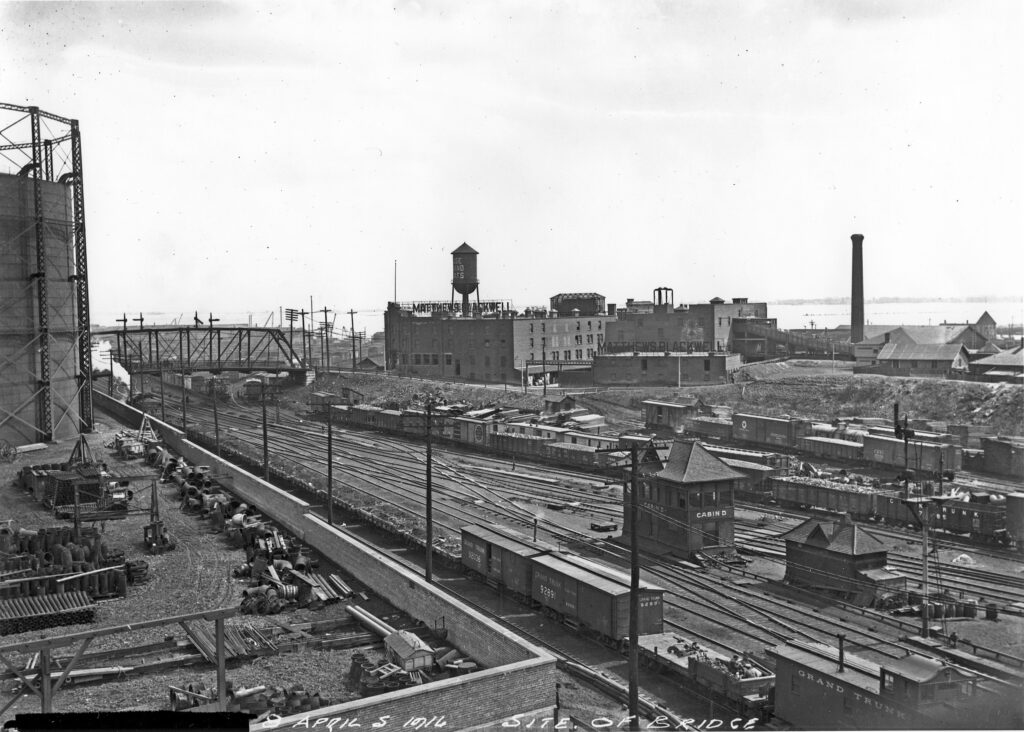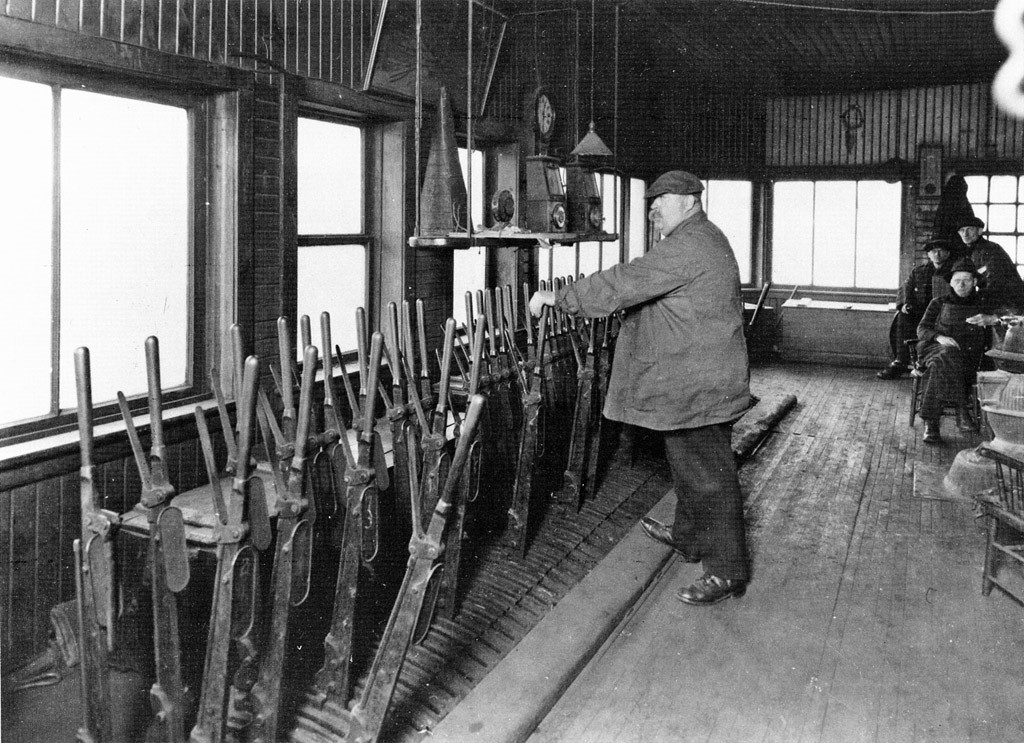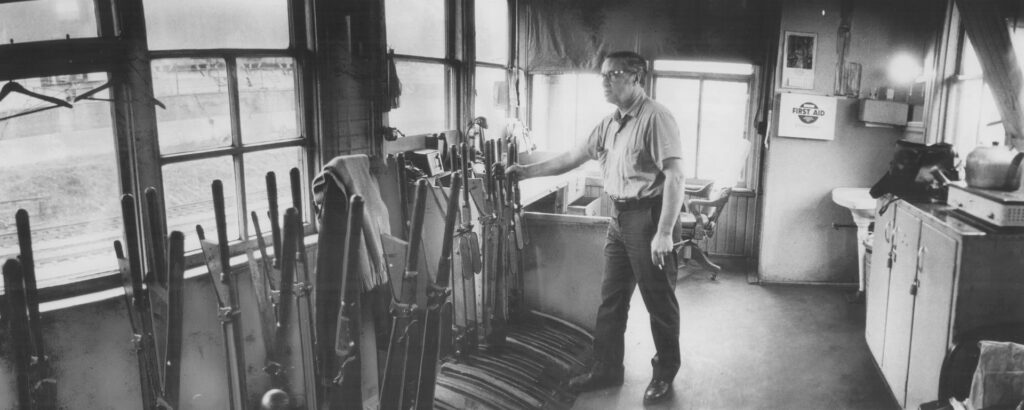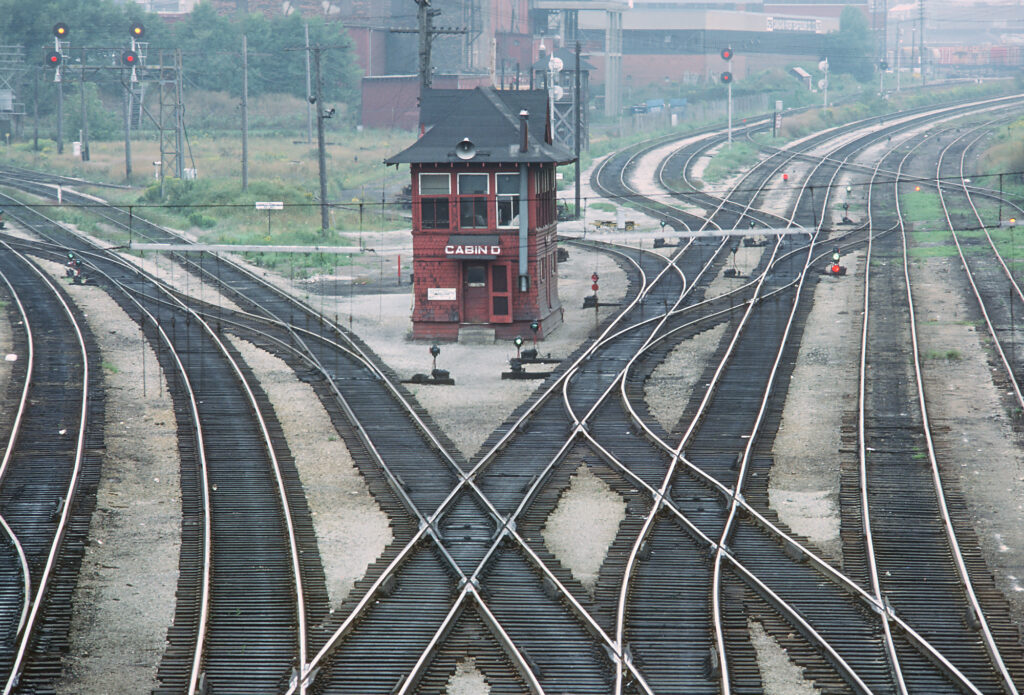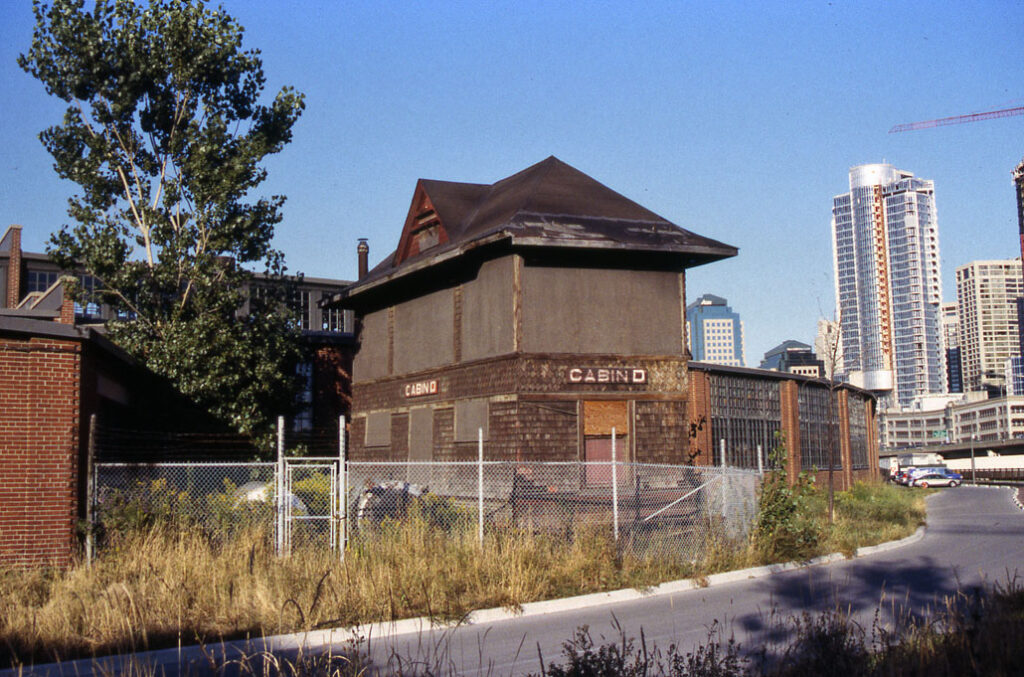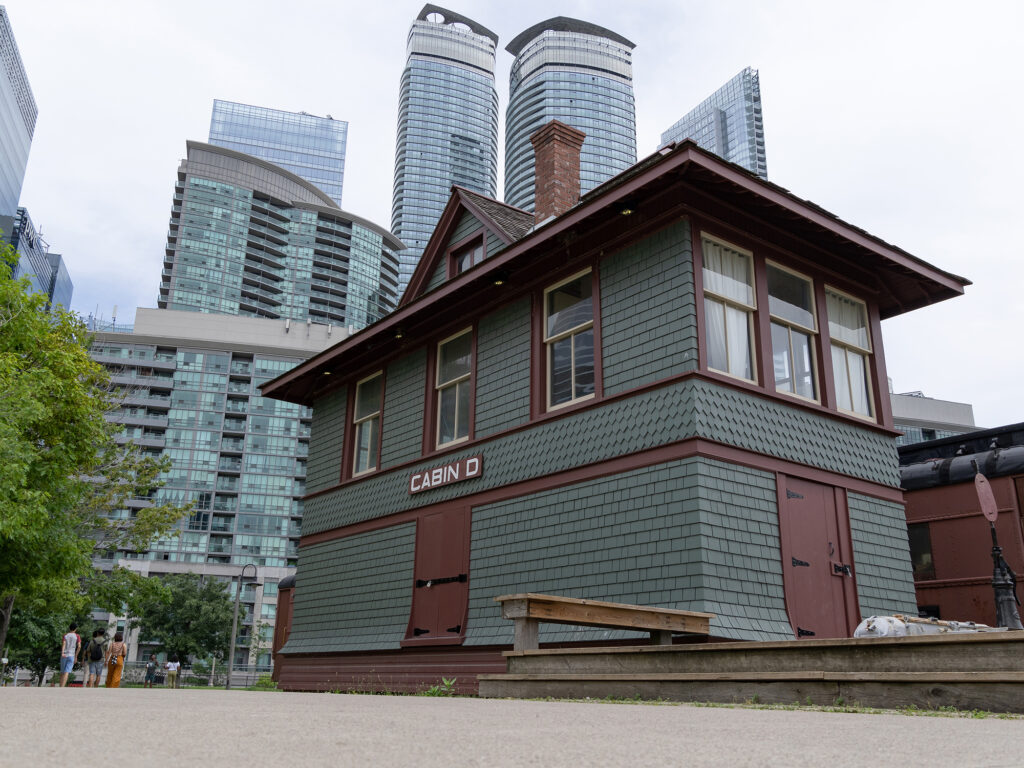Cabin D is a wooden interlocking tower that was built by the Grand Trunk Railway in 1894. It was originally located just west of the Sir Isaac Brock Bridge though currently resides in Roundhouse Park. When Toronto’s second Union Station was enlarged between 1892 and 1896 the rail corridor was significantly modified to allow for a higher volume of trains. In an age before such tasks could be done automatically, four interlocking towers were built for operators to directly control the various switches and signaling systems that were installed as part of these upgrades. These towers were labelled A through D and positioned strategically at different locations in the Union Station corridor to govern train movements. Out of all the towers that were built as part of this work, Cabin D was the located the furthest west. Another tower called Cabin E was located to the west of Cabin D on the line towards Exhibition, but it wasn’t built until later and was technically located just outside the Union Station corridor. The mechanical interlocking system inside each tower was manufactured by Saxby & Farmer Limited in the UK, and comprised of a series of levers used to control the signals and switches in a given interlocking tower’s immediate vicinity. What makes it an interlocking system is that it was designed in such a way to make conflicting arrangements of the levers physically impossible, with the goal of reducing the possibility of human error. This also avoided the need for switches to be thrown manually by switch tenders on the ground, a job that previously needed to be done in all weather conditions with little to no shelter. The operator inside the tower, in addition to having shelter and warmth, would also have the benefit of an up-to-date timetable, a telegraph key, and a clock set as accurately as possible to ensure operations ran smoothly.
Cabin D was somewhat unique in its architecture compared to towers A through E. The size of an interlocking tower was often dictated by the number of levers that were contained within, and Cabin D was easily the second largest of the corridor’s interlocking towers. The only larger one was Cabin A, which was located approximately where the current Union Station trainshed and platforms are today. When construction on the new Union Station was underway in the 1920’s, raising and realigning parts of the rail corridor resulted in the demolition of all interlocking towers east of Cabin D. These were replaced by new towers labelled Cherry Street, Scott Street and John Street in that order from east to west, utilizing a more advanced electro-mechanical interlocking system. The interlocking system in Cabin D became disused at some point after this, replaced with old-fashioned switch tenders who were instructed from a loudspeaker mounted to Cabin D’s roof.
As further upgrades to the Union Station corridor were made, Cabin D as well as Cabin E to the west became surplus to the railway’s needs. Cabin D was selected for preservation and was transported to the John Street Roundhouse in 1983, with the hope that it could be restored as part of a future railway museum at that site. Cabin E would not be so lucky as it was dismantled in 1984. Despite many efforts over several decades, a railway museum at the John Street Roundhouse would not materialize for many decades. The Toronto Railway Historical Association was founded in 2001 and quickly began working to form a railway museum in the roundhouse, a goal they would achieve with the opening of the Toronto Railway Museum in 2010. Cabin D was fully restored in time for the museum’s opening, including its now-disconnected interlocking system. It is open to the public on most weekends in the summer with demonstrations of the interlocking system by our volunteer docents when available.



